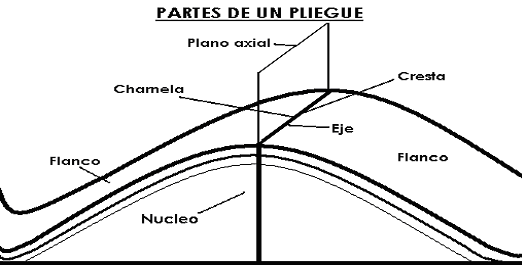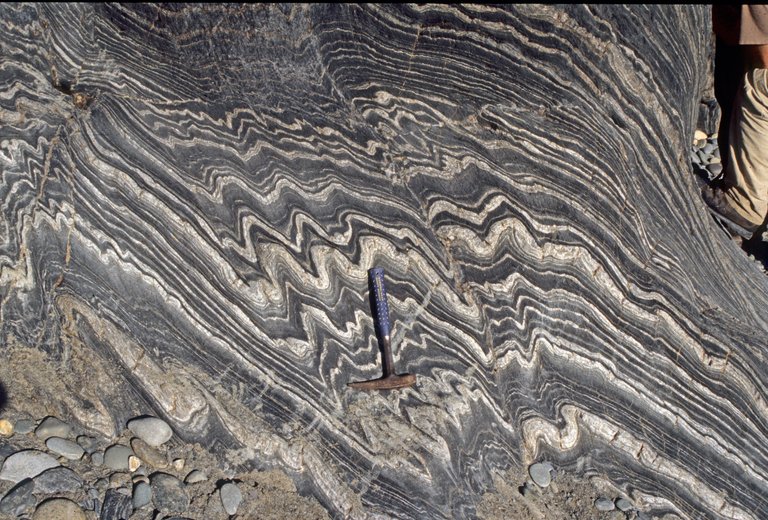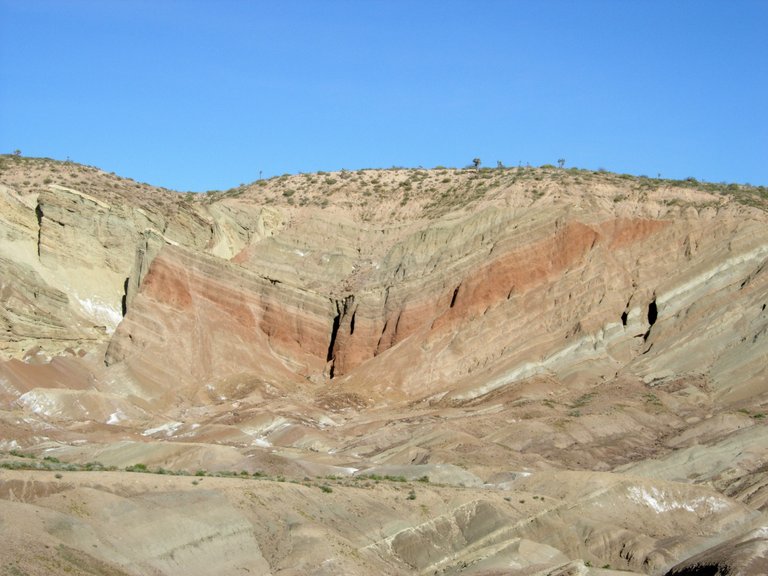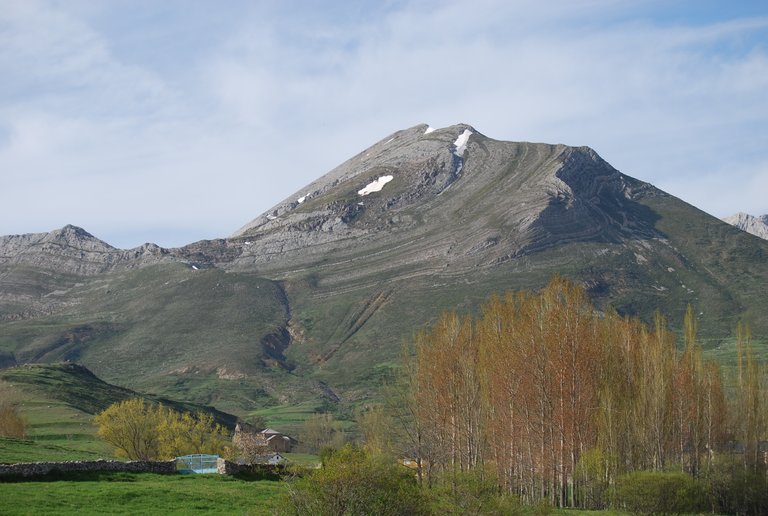Hello friends, the following publication I do in reference to the science of geology, and today I want to talk in this publication about the geological formations that are represented in the foldings of the mountains, in this post will be defined basic concepts on folding and other terms associates, I invite you to observe this interesting information!

Folding or folding, is a deformation of rocks, usually sedimentary, in which elements of a horizontal nature, such as strata or planes of schistosity (in the case of metamorphic rocks), are curved forming elongated undulations and directions more or less parallel to each other.
The folds originate by compression efforts on rocks that do not break them; instead, when they do, so-called failures are formed. They are usually located at the edges of the tectonic plates and obey two types of forces: lateral, caused by the interaction of the plates (convergence) and vertical, as a result of the lifting due to the phenomenon of subduction along a zone of subduction more or less broad and elongated, in which the ridges or reliefs of folding rise.
Elements of a fold
- Hinge:area of greater curvature of the fold.
- Hinge line or fold axis: line joining the points of greatest curvature of a surface of the fold.
- Direction: angle that forms the axis of the fold with the north-south geographic direction.
- Axial plane: plane that contains all the hinge lines and cuts the fold.
- Core: more compressed and more internal part of the fold.
- Flanks: halves in which it divides the axial plane to a fold.
- Pitch: angle that forms the fold axis with a horizontal line contained in the axial plane.
- Ridge: highest area of a convex fold upwards.
- Valley: lower area of a concave fold upwards.

Characteristics of a fold
- Immersion: angle formed by a hinge line and the horizontal plane.
- Direction: angle formed between a fold axis and the north-south direction.
- Dip: angle formed by the surfaces of each flank with the horizontal (always taking the maximum slope for each point).
- Vergence: direction towards which the axial plane of a non-straight anticline is tilted (also direction towards which the upper block of a thrust is displaced).

Types of creases
The folds can be classified according to several characteristics:
By the arrangement of its layers according to age:
- Anticline: the strata are older the closer they are to the nucleus. The fold is convex upwards as long as its position has not been reversed due to tectonic causes.

- Synclines: the strata are younger the closer they are to the nucleus. The fold is concave upwards as long as its position has not been reversed due to tectonic causes.

For its shape:
Antiform: The fold is convex upwards, every first generation antiform fold is an anticline.
Synthetic: The fold is concave upwards or convex downwards, all first generation synplish fold is a syncline.
For its genesis:Folds of first generation: They are the original folds of an orogen.
Folds of successive generations: They are folding of the folds themselves, they can be studied thanks to the phenomenon of foliation, they are the cause of changes in the shape-antiquity relationship of the layers in the folds.
Because of its symmetry
Symmetrical with respect to the axial plane
Asymmetric with respect to the axial plane.
By the inclination of the axial planeStraight: the axial plane is in vertical position.
Inclined or lying: the axial plane is inclined.
Recumbents: the axial plane is very inclined or horizontal. In these cases, an inversion of the stratigraphic record can be produced.
For the thickness of its layersIsópacos: their layers have a uniform thickness.
Anisopacos: Their layers do not have a uniform thickness.
For the angle formed by its flanksIsoclinales: its flanks are parallel.
Tightened: the flanks form an acute angle.
Soft: the flanks form an obtuse angle.
Folds associations
The folds are not usually found isolated, but are associated. The simplest associations of folds are:
- Isoclinorio: the axial planes of the folds are parallel.
- Anti-collision: the axial planes of the folds converge under the fold, so that the set of folds has anticline form.
- Sinclinorio: the axial planes of the folds converge above the fold, so that the set of folds is synclinal.

Hello,
Copying/Pasting full texts without adding anything original is frowned upon by the community.
These are some tips on how to share content and add value:
Repeated copy/paste posts could be considered spam. Spam is discouraged by the community, and may result in action from the cheetah bot.
If you are actually the original author, please do reply to let us know!
Thank You!
More Info: Abuse Guide - 2017.
You received a 10.0% upvote since you are not yet a member of geopolis.
To read more about us and what we do, click here.
https://steemit.com/geopolis/@geopolis/geopolis-the-community-for-global-sciences-update-3
If you do not want us to upvote and comment on your posts concerning earth and earth sciences, please reply stop to this comment and we will no longer bother you with our love ❤️
It reminds me of the classes of Geology in the classrooms of the University. Interesting information, my friend. Greetings.